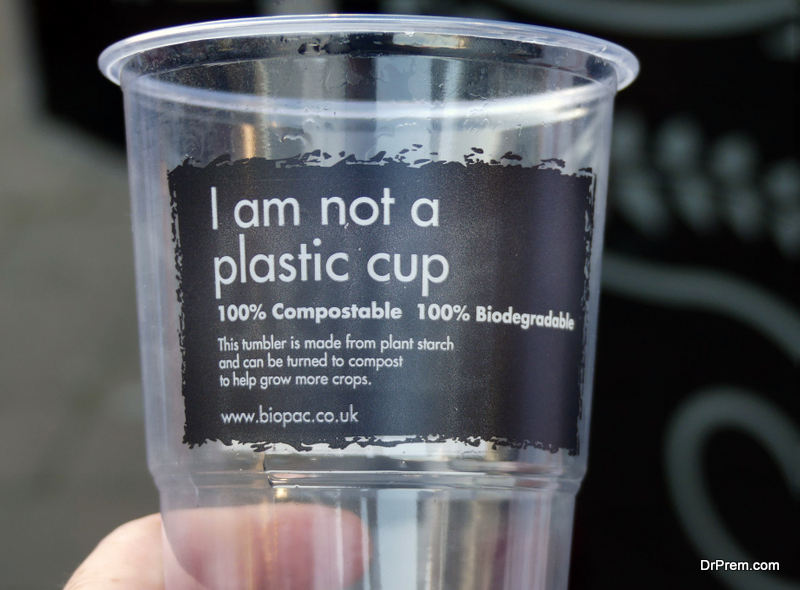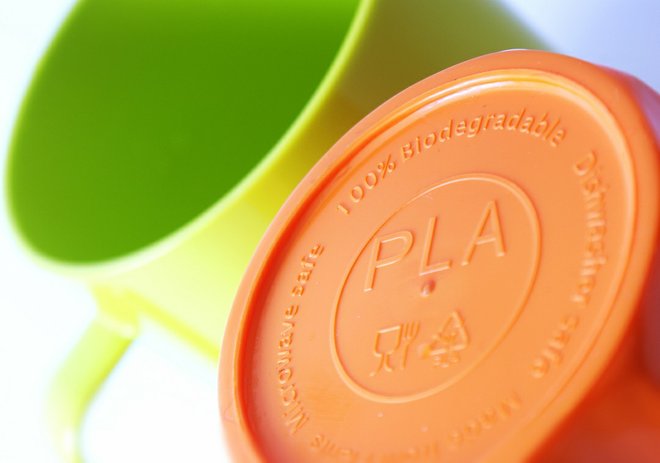Difference between Biodegradable, Compostable, and Degradable
In the world of sustainability and increased environmental awareness, it is easy to get lost in the myriad of related terminologies. There are many misconceptions around the term biodegradable as many products are labelled as such even though they may not strictly meet the most important aspects of its definition. To minimise the confusion and the exploitation that arises as a result of this, standards have been developed by organisations such as ASTM (American Society for Testing Materials) and ISO (International Standards Organization) to properly assess the biodegradability (and other properties of concern to waste management) of materials in different environments [1].

Credit: Green Diary
There is great interest in these terms, especially from the packaging industry, a major cause of terrestrial and aquatic pollution. Alternative materials are being developed to curb the proliferation of waste products that negatively impact the environment. New materials are being developed and experimented with, which can break down readily without adding microorganisms or chemicals into the production process. New disposal techniques are being researched, as well, to manage the waste already in circulation.
In this article, you will learn about:
- What biodegradable means
- What compostable means
- What degradable means
- Comparison of biodegradable, compostable, and degradable
What does biodegradable mean?
Theoretically, any material made up of organic compounds is biodegradable. No matter how long it takes, the carbon-based material will inevitably be oxidised into carbon dioxide via microbial respiration.
This process of converting organic carbon into inorganic carbon is also referred to as mineralisation. However, from a human point of view and a useful timescale, synthetic polymeric materials are said to be inert or resistant to biodegradation due to the extremely slow degradation process they undergo. Incineration and energy recovery is often the best course of action in dealing with this type of waste [2].
Biodegradable materials are materials that can be broken down naturally by microorganisms such as bacteria, fungi and algae without any added human intervention in the form of processing conditions or chemical additives. These materials contain plant or animal-based microorganisms, which help break them down after they have been discarded.
The degradation of these materials occurs in the presence of oxygen to produce water, carbon dioxide, minerals, and new biomass over time. However, it is also possible for these materials to break down anaerobically (in the absence of oxygen) but with methane (a greenhouse gas) as a by-product. The broken-down components are most of the time of no nutritional benefit to life on earth. Certain favourable conditions must be met for this process to occur, such as the right temperature, microorganisms, nutrients, moisture, oxygen, and most importantly, time.

Credit: Packaging Europe.
One common misconception is the equation of bio-based materials with biodegradable materials. Despite having similar names, a bio-based material is not automatically biodegradable, and biodegradable materials do not have to be bio-based. “Bio-based” is a label given to materials made from renewable biomass (commonly, plants), while “biodegradable” indicates the end-of-life situation, where the material undergoes degradation under the effect of microorganisms.
What does compostable mean?
Compostable materials, like biodegradable materials, are broken down by microorganisms but with a key difference: The broken-down matter must enhance the nutritious quality of the soil without introducing any toxicity. Also, this entire process must take place within 12 weeks for a material to be considered compostable.
It could be inferred that compostable materials are made from organic raw materials for their broken-down components to be organic and beneficial to the soil. However, this is not necessarily true as not all bio-based materials are compostable or even biodegradable. Some petroleum-based materials can be composted, such as BASF’s product Ecoflex.
The process of composting is not usually possible on a small and unregulated scale (home composting). It is often necessary to be carried out in an industrial composting facility, where adequate conditions (such as temperature, humidity, etc.) are maintained.

As per the ASTM standard, D6400, a material is deemed compostable once it passes the test of disintegration, biodegradation, and non-toxicity in a controlled laboratory environment. A similar ISO standard, EN 13432, specifically developed for packaging, deems a material compostable as long as the individual components used in its production are compostable [2].
What does degradable mean?
Degradation is a decomposition process that terminates in the fragmentation of plastics under the conditions of heat, sunlight, and moisture, resulting in the weakening of the plastic’s polymeric chains.
The end product is many microscopic particles that may be even more problematic than before degradation as they may find their way into the diet of animal life and influence the food chain. Many experts have suggested that degradable plastics do not solve any problem but instead push the problem into the future [3].

Credit: Martin Bond / Science Photo Library.
Biodegradable vs compostable vs degradable
Here, we compare the three terms, biodegradable, compostable, and degradable, and we highlight their key differences.
|
Biodegradable |
Compostable |
Degradable |
|
Degradation typically takes place in less than a year. |
Degradation has to be completed within 12 weeks. |
Degradation takes the longest time and may occur over many decades. |
|
A biodegradable material does not necessarily enrich the earth after degradation. |
A compostable material’s degraded form enriches the earth via nutrients and texture improvement. |
A degradable material does not enrich the earth after degradation. |
|
Biodegradable plastics won’t degrade in a landfill due to lack of oxygen, which is necessary for microorganisms to survive and operate. |
Compostable plastics need very specific conditions to degrade, and it is not sufficient to merely expose them to oxygen. |
Degradable plastics do not require oxygen to degrade. |
|
Degradation occurs via the enzymatic action of naturally occurring microorganisms. |
Degradation occurs via the enzymatic action of customised microorganisms. |
Degradation occurs chemically but not via the enzymatic action of microorganisms. |
|
A biodegradable material breaks down into several components, including organic materials. |
A compostable material breaks down into several components, including organic materials. |
A degradable material breaks down into microscopic fragments (microplastics) but not into organic materials. |
|
Degradation is benign to the earth. |
Degradation is benign to the earth. |
Degradation into micro-plastics may prove toxic to the earth. |
Although the three terms, biodegradable, compostable and degradable, are used to describe particular plastics, strictly speaking, one could say all compostable plastics are also biodegradable, and both biodegradable and compostable plastics are degradable. A lot of research is still being carried out to create new materials and new disposal processes, and it is not far-fetched to expect the meaning of these terms to be revised in the future.
Sources
[1] Vaverková, Magdalena, et al. "Study of the biodegradability of degradable/biodegradable plastic material in a controlled composting environment." Ecological Chemistry and Engineering S 19.3 (2012): 347-358.
[2] Degli Innocenti, Francesco. "Biodegradability and compostability." Biodegradable polymers and plastics. Springer, Boston, MA, 2003. 33-45.
[3] Folino, Adele, et al. "Biodegradation of wasted bioplastics in natural and industrial environments: A review." Sustainability 12.15 (2020): 6030.